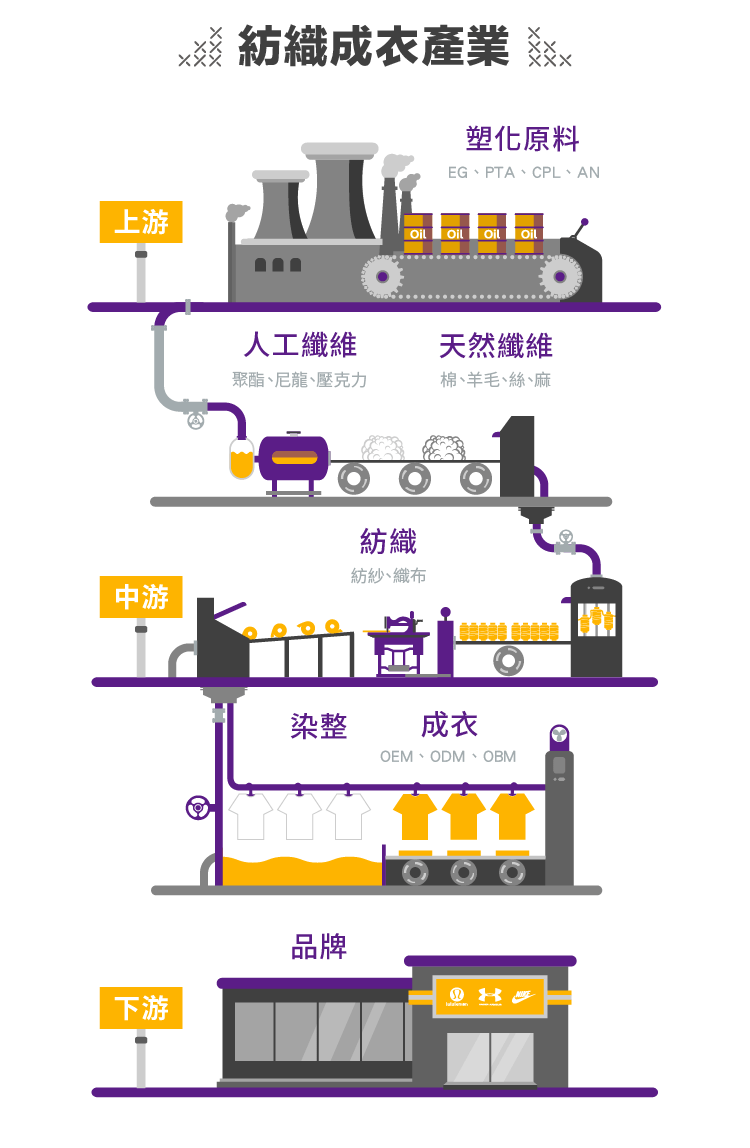Dyeing Department
The most important aspect of dyeing fabric is the dye itself. The quality of the dyed fabric can be affected by the differences in raw materials. To ensure the safety and confidence of the general public when using the dyed products, factories strictly monitor the sources of the dyes before the dyeing process to ensure consistent quality.
Dyes
Most commonly used dyes in the market are imported from mainland China, primarily mineral dyes. Before dyeing, they undergo rigorous testing to ensure they do not contain heavy metals. Some fabrics are woven with colored yarns, which have their own limitations during the dyeing process.
Grey Fabric: The type of grey fabric determines the dye to be used. The company mainly uses two basic fabrics, nylon and polyester, as well as blends based on these two. Nylon and polyester have different characteristics, so the dyes used are different. Nylon is easier to dye, requiring only high pressure at room temperature using acid dyes, with temperatures around 98°C. Polyester, having tighter fibers, requires high temperature and pressure, using disperse dyes, and needs temperatures of at least 130°C.
Auxiliaries
In dyes, besides pigments, the "auxiliaries" added based on the type of fabric are also crucial. Commonly used auxiliaries include:
1. Acetic Acid: Acts as a "dyeing aid" As fabrics react faster to acids, acetic acid is typically used, but citric acid can also be substituted.
2. Leveling Agent : As the name suggests, it ensures uniform coloration. Especially used for fabrics with two types of materials, as different materials dye at different temperatures.
3. Softener: Makes the fabric soft. Proportions vary based on customer needs.
4. Resin: Hardens the fabric. Proportions vary based on customer needs.
5. Antimicrobial Agent: Added as per need, mainly for odor control and antimicrobial properties.
Scouring
Before dyeing, a crucial process called scouring is employed. Though not all fabrics undergo this, it's pivotal. Also known as washing, its main aim is to remove impurities and oils that could hinder dyeing.
Dyeing
The dyeing process generally consists of three stages: feeding the fabric, dyeing, and removing the fabric. Once scoured, fabrics can be dyed. Dyeing requires high temperature and pressure. Nylon uses acid dyes at about 98°C, while polyester, being denser, uses disperse dyes and starts dyeing at around 130°C.
Drying & Heat Setting
Post-dyeing, the drying stage begins. This balances the fabric's feel and stabilizes its size, color, and shrinkage rate. Typically, polyester requires temperatures around 130°C, while nylon needs at least 180°C.
Heat Setting
Heat setting is divided into pre-setting and final setting. Pre-setting is done immediately after dyeing, especially for special types of fabrics. Final setting is the final heat setting procedure post-dyeing.
Inspection
After heat setting, there's the crucial step of fabric inspection. It's the final quality and color check before shipping.
Packaging & Shipping
After multiple processes like dyeing, drying, and inspection, the final step is packaging.
Finally
This detailed process gives an in-depth look into the journey of fabric from its raw state to the final dyed product. The meticulous steps ensure that the final product is of high quality, colorfast, and meets customer requirements.


